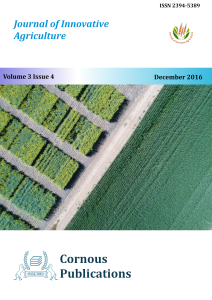A machine was fabricated for dehulling wet-processed coffee using local materials. It was evaluated at different drum and fan speeds using parchment coffee at 10.7 w.b. moisture content. The results obtained indicated that the dehulling efficiency, bean damage and cleaning efficiency increased as the drum and fan speeds increased between 800 – 1400rpm and 1400 – 1900rpm respectively. However, there was no significant difference in dehulling efficiency and bean damage at these speeds (0.05 sig.), but the cleaning efficiency increased significantly at higher fan speeds. The highest average dehulling efficiency, cleaning efficiency and bean damage were respectively 97.59, 93.30 and 6.17%. High dehulling and cleaning efficiencies and low bean damage obtained indicate that the machine is very appropriate to handle coffee processing. Considering the reasonable performance achieved at wide range of the machine operating conditions, this work has a good prospect for commercial coffee production.
Integrated weed management is a system approach where by whole land use planning is done in advance to minimise the very invasion of weeds in aggressive forms and give crop plants a strongly competitive advantage over the weeds. Further, importance is given to involve more than one method of weed control in tackling the weeds so those broad spectrums of weeds are kept under check for longer period. A pre emergence herbicide take care of weeds only for a limited period and do not give long term weed control in a long duration crop like cotton where the problem of late emerging weeds arises and escape killing. So to attain a season long weed control, integration of chemical, mechanical and cultural methods holds a great promise in crop production. Hence, integrated weed management in cotton play important role in increasing crop production. Field experiments were conducted during 2013 and 2014, at Agricultural College and Research Institute, Madurai (Tamil Nadu Agricultural University) to study the effect of integrated weed management in rainfed cotton. The weed management practices consisted of pendimethalin (1.0 kg.ha-1) and (Calotropis gigantea leaf extract spray at three concentrations (10%, 20%, and 30%) in combination with power weeder operation twice and manual weeding twice. From the results of the experiments, it could be recommended that the integrated weed management practices like, application of PE pendimethalin at 1.0 kg ha-1 + power weeding on 40 DAS (T11) recorded higher seed cotton yield and economic return.
Colour is an inherent property of foods and it enhances the delicacy of food not only provide flavor and delight appearance, but it also provides information on quality and condition of the food products. The synthetic colours are toxic and they have proved to be harmful to human health and also make it undesirable for human consumption. Consumer awareness and growing concern over the safety aspects of synthetic colours have put the pressure on food processors to adopt natural colours, which are considered to be safe to the consumer. Therefore the attention of food industry has turned to use synthetic colours in food products. Natural food colours are generally extracted from fruits, vegetables, seeds, roots and microorganisms. Natural food colours protect food from oxidation by enzymes. Therefore, they not only enhance the appearance and flavor to the food but also protect the food from oxidation. Many natural colorants are rich in nutrients and antioxidants and their presence in the diet reduces the risk to many diseases. The present study was conducted to extract the bio food colour powder from elephant foot yam by using spray dryer. The colour was extracted with water and acetone as a solvents, different level of maltodextrin (15, 20 & 25%), drying termperature (160, 180 and 200oC) and flow rate (25 & 30 ml per min). The yield recovery 9.3g/100ml was maximum at 180ºC with a flow rate of 25 ml / min at 25 % maltodextrin. The colour value L* was found to be 181.05, a* - 9.33and b* was found to be 56.06. The powder was sensory evaluated and sensory score was recorded as 8.2 thus, natural colorants from foot yam which are rich in nutrients, antioxidants and their presence in the diet reduces the risk to many diseases.
Soybean is a fascinating crop with innumerable of not only improving agriculture but also supporting industries. In the present investigation, attempts were made to study the relative efficacy of different insecticides against leaf defoliators. It was found that, defoliator (Spodoptera litura and Green semi looper) was significantly reduced in plots treated with Quinolphos 25 EC @ 1000 ml/ha followed by Endosulfan 35 EC @ 1000 ml/ha and Chlorantraniliprole (E2Y45) 20 SC @ 200 ml/ha which were at par with each other and the next superior treatments were lambdacyhalothrin 5 EC @ 300 ml/ha, Diflubenzuron 25 WP @ 400 ml/ha, Triazophos 40 EC @ 800 ml/ha and Indoxacarb 14.5 SL @ 500 ml/ha which were at par with each other. Highest yield was obtained from plots treated with lambdacyhalothrin 5 EC @ 300 ml/ha (2500 kg/ha) followed by Triazophos 40 EC @ 800 ml/ha (2451 kg/ha), diflubenzuron 25 WP @ 400 g ml/ha (2400 kg/ha), Indoxacarb 14.5 SL @ 500 ml/ha (1930 kg/ha) and others.
